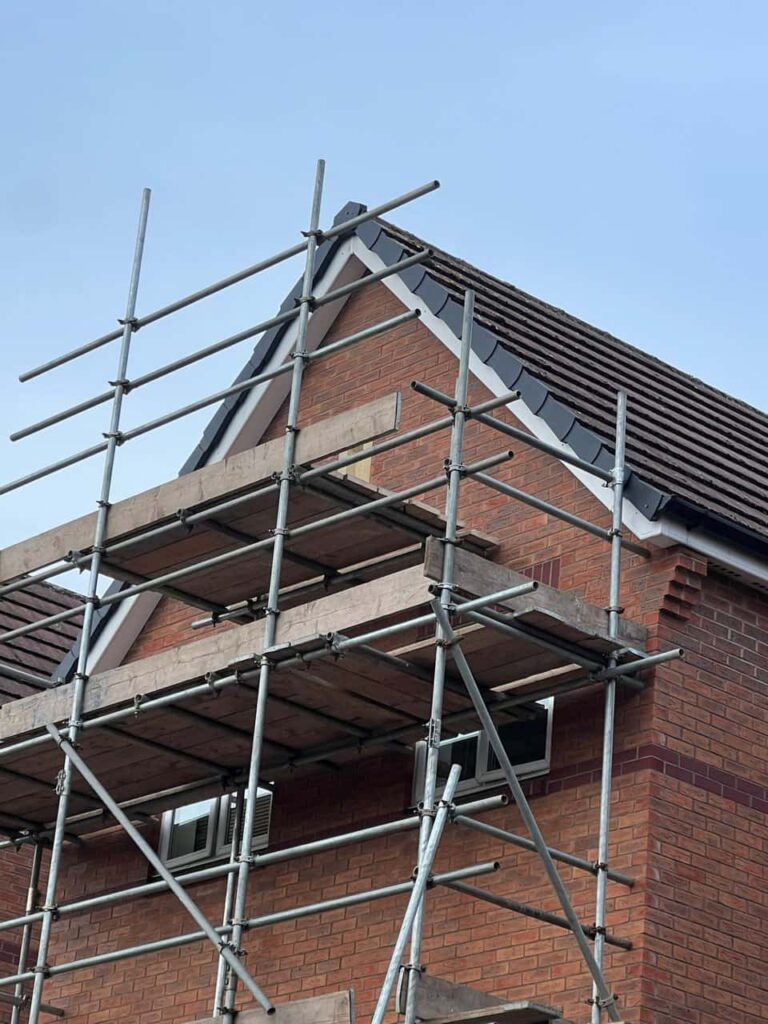When most homeowners think about roofing, they tend to focus on tiles or slates—but there’s another critical component that plays a major role in protecting your home: flashing. At Wigston Roofing Repairs in Wigston, Nottinghamshire, we understand the importance of flashing in preventing hidden damage beneath your roof covering, particularly rot and mould.
What Is Roof Flashing?
Flashing refers to thin, weather-resistant strips—commonly made from lead, aluminium, or galvanised steel—used to direct water away from vulnerable areas of a roof. It’s typically installed around chimneys, roof valleys, vents, and junctions where the roof meets vertical surfaces like walls or dormers.
How Water Ingress Leads to Rot and Mould
Roof tiles or slates alone are not watertight. Their primary function is to shed water, but without adequate sealing and redirection, rain can seep into gaps or collect in corners.
- Water that gets beneath tiles can soak into the underlay, battens, or structural timbers
- Persistent moisture creates the perfect conditions for timber rot and mould growth
- Hidden mould in the loft space can affect insulation, roof structure, and even indoor air quality
This kind of damage is not always immediately visible, making it all the more dangerous if flashing fails or is poorly installed.
How Flashing Stops Moisture in Its Tracks
Properly fitted flashing acts as a waterproof barrier that intercepts and redirects rainwater away from joints, penetrations, and vulnerable areas.
Channels Water Off the Roof
Flashing helps guide water down the slope into the guttering, rather than allowing it to pool or leak into the roof void.
Seals Critical Roof Junctions
It reinforces the areas where tiles alone would not provide enough coverage, such as around chimneys and valleys.
Prevents Freeze-Thaw Expansion
By keeping moisture out, flashing also reduces the risk of water freezing beneath tiles in winter, which can cause cracking and loosen fixtures.
Stops the Build-Up of Damp
Well-maintained flashing ensures that battens, rafters, and roof decks stay dry, preventing the fungal growth that leads to rot.
Signs That Your Flashing Needs Attention
Flashing can deteriorate over time due to weathering, corrosion, or improper installation. You should consider an inspection if:
- You notice rust, cracks, or gaps in flashing strips
- Tiles are slipping near chimneys or joints
- There’s dampness or staining on internal ceilings or loft insulation
- You see moss or mould growth on the roofline
At Wigston Roofing Repairs, we offer professional roof inspections in Wigston to assess the condition of your flashing and recommend any necessary repairs.
Why Timely Flashing Repairs Are Worthwhile
Dealing with a small issue now can save thousands in future repairs. Flashing that fails to protect your roof allows rot and mould to develop unnoticed, often requiring timber replacement, underlay repair, and even partial re-roofing.
- Prevents costly structural damage
- Protects insulation and energy efficiency
- Maintains the lifespan of your roofing system
- Avoids unhealthy mould spores entering your home
Conclusion
Roof flashing is a small but vital element that plays a major role in protecting your home from rot and mould. Ensuring it’s correctly installed and well-maintained can make the difference between a dry, secure home and hidden, expensive damage. At Wigston Roofing Repairs in Wigston, Nottinghamshire, we provide reliable flashing inspections and repairs to keep your roof performing at its best.
If you’re concerned about your flashing or have noticed signs of damp or mould, contact Wigston Roofing Repairs today for expert advice and a detailed roof assessment.
Call us on: 0116 464 7498
Click here to find out more about Wigston Roofing Repairs
Click here to complete our contact form and see how we can help with your roofing needs.

